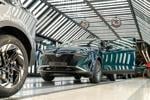Another motor show comes and goes, with all the razzmataz, glitz and glamour that the industry can muster. How impressive even the humblest new model looks under thousands of pounds worth of display lighting.
Pleasing as it is to see our industry enthusiastic and thriving we cannot afford to pay any attention to the hype. If you went to the London show and were bowled over by what you saw try this little exercise get an insight into the job of future residual forecasting.
Instead of focusing on the 1999 show think back to 1996. At that show we saw debuts from the re-styled Mondeo, Rover's new 200, Ford Ka and Audi A3. So, while you were admiring the sparkling new models this month you would have put them in perspective by looking back three years to these sparkling predecessors.
That is one of the ways to get a real handle on the car launches of today. It is an invaluable technique because it also starkly reveals the process by which freshness wears off in the mind of the public. And that is one of the most important elements in the art of forecasting - seeing the new car as a used vehicle by mentally travelling forward in time. To do it successfully you have to ignore the current hype.
All of that will have been forgotten when the car comes back in three years and the vehicle's residual value will have literally been earned on the road. Image and desirability will have been generated - or eroded - entirely in the public mind. By the time the car is two or three years old almost all the comment on its reliability, comfort and economy will be generated not in the press or on television, but down the pub, in the supermarket car park and over the garden fence.
This is a crucial part of the typical lifecycle of a car. Go back to those 1996 motor show launches and take the Ford Ka. Back then the basic model carried a list price of £7,350. Less than a year into its life power steering was introduced with no real impact on its new price. This feature had a major impact on the earliest models by rendering them far less desirable - even though they were the cars closest to the original launch hype.
The same is true of the Mondeo where the introduction of aircon had a similar effect on early models. Another common factor in lifecycles is illustrated by the Saxo, which also debuted in 1996. It has been replaced by the facelifted Saxo 2, but pressure on values has not only come from a replacement model.
There has been a lot of marketing activity on new Saxos which have been priced in some cases to compete virtually head on with the nearly new car.
All of these factors determine the residual value of a car - not what the manufacturer says. Which should serve to illustrate how careful you need to be when you walk onto those show stands and try to guess how that sparkling thing will appear in a few years.
Understanding that, and anticipating every eventuality is the underlying art of forecasting.












Login to comment
Comments
No comments have been made yet.